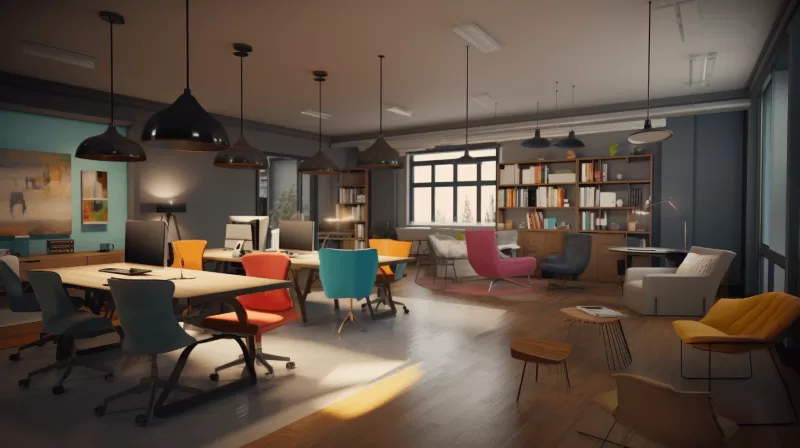When you take a stroll down memory lane and compare office spaces from the 1980s to today’s
modern workplaces, it’s clear that we’ve witnessed some massive shifts in
work culture, technology, and design trends that are not just intriguing, but also highly relevant to anyone involved in building these spaces, like construction managers, architects, and designers. The days of heavy wooden desks and pinned cubicle walls are behind us, as today, we’re embracing open layouts and tech-savvy, flexible work environments that cater to the needs of today’s workforce. So how much have things really changed and what does it mean for those creating these dynamic spaces?
The Shift from Segmentation to Collaboration
Back in the 1980s, offices were characterized by a maze of cubicles and bulky, imposing desks that made every workspace feel like a mini fortress—each employee stuck in their own little box, with a heavy corporate cloud hanging in the air.
Fast forward to today, and modern offices have ditched that segmented approach in favor of open layouts that promote collaboration and teamwork. You’ll find collaborative workstations and ergonomic furniture that prioritizes comfort and mobility, which makes it easy for everyone to shift gears as needed. And speaking of comfort, you’ll notice that many modern office buildings are now featuring dedicated spaces just for relaxation. These cozy spots often come with
comfortable seating arrangements, like plush sofas and inviting armchairs, which make it easy to take a break and recharge. You’ll also typically find mobile desks nearby in case you want to grab your laptop and get some work done while enjoying a more laid-back atmosphere.
And those huge desks made from heavy materials? Now we’re looking at minimalist designs crafted from lighter materials that offer flexibility to accommodate all sorts of work styles from standing desks to comfy, adjustable chairs. For construction managers and designers, this means focusing on creating adaptable spaces that encourage movement and interaction to allow teams to thrive in an environment that feels as good as it looks.
From Wires to Wireless Wonders
In the 1980s,
technology was pretty basic; we had desktop computers with bulky monitors, those landline phones everyone used, and good ol’ fax machines to get the job done. Designing office spaces back then meant figuring out how to accommodate all those wires and cables, creating a bit of a cluttered look that didn’t exactly scream innovation.
But now, and we’re seeing an integration of digital tools in the workplace that would make anyone in the ’80s do a double take. Modern offices are now equipped with wireless technology, sleek laptops, and smartboards, taking away the mess and allowing for designs that are not only tech-friendly but also stylish. You’ll find power outlets, charging stations, and collaboration tech seamlessly integrated into the furniture and layout, all while providing an open, clean look.
Design Aesthetic and Materials
80s office design trends leaned heavily toward formal and conservative styles, filled with dark woods, heavy fabrics, and metal finishes that gave every office a rather serious and corporate look. Walls were typically drenched in beige or gray, resulting in spaces that felt more like functional boxes than inspirational places to work. In contrast, today’s offices have embraced a much lighter, airier vibe that promotes creativity and well-being. You’ll find beautiful bright colors, natural materials like wood and stone, and even glass walls that open up the flow of light; there’s a strong emphasis on creating spaces that feel welcoming and alive. Biophilic design is all the rage, with a focus on bringing nature indoors through plants and maximizing natural light to boost employee morale and productivity. For those building these spaces, it’s essential to consider not only what looks good but also what makes people feel good, because it allows for designs that uplift spirits and nurture creativity.
The evolution of office spaces from the 1980s to today highlights some major shifts in work culture, technology, and design trends that are more than just superficial changes—they carry significant implications for construction managers, architects, and designers who are in the process of creating the workplaces of tomorrow. As we move forward, it’s thrilling to consider how these innovations will further redefine our work environments and enhance collaboration among teams.

